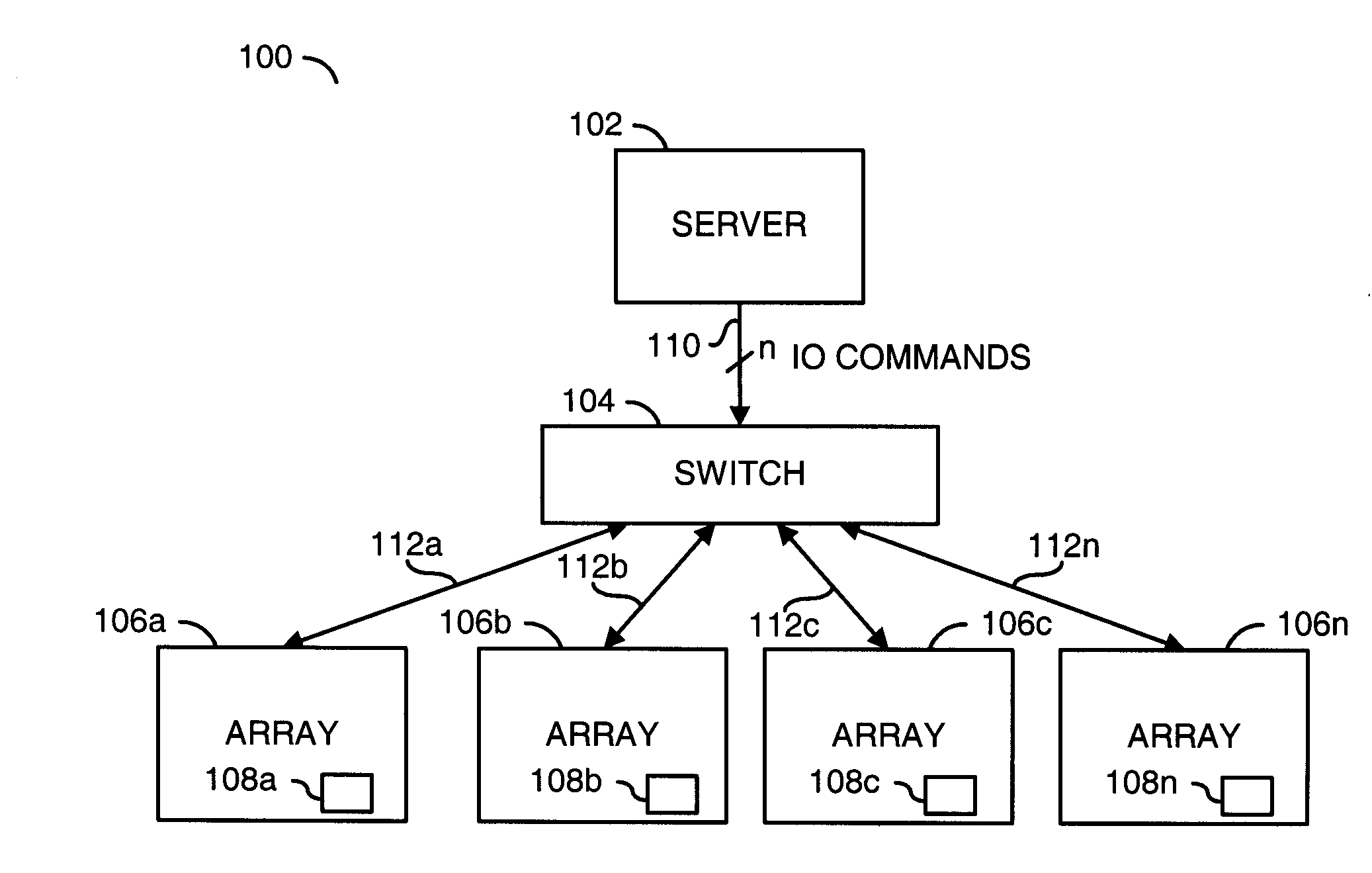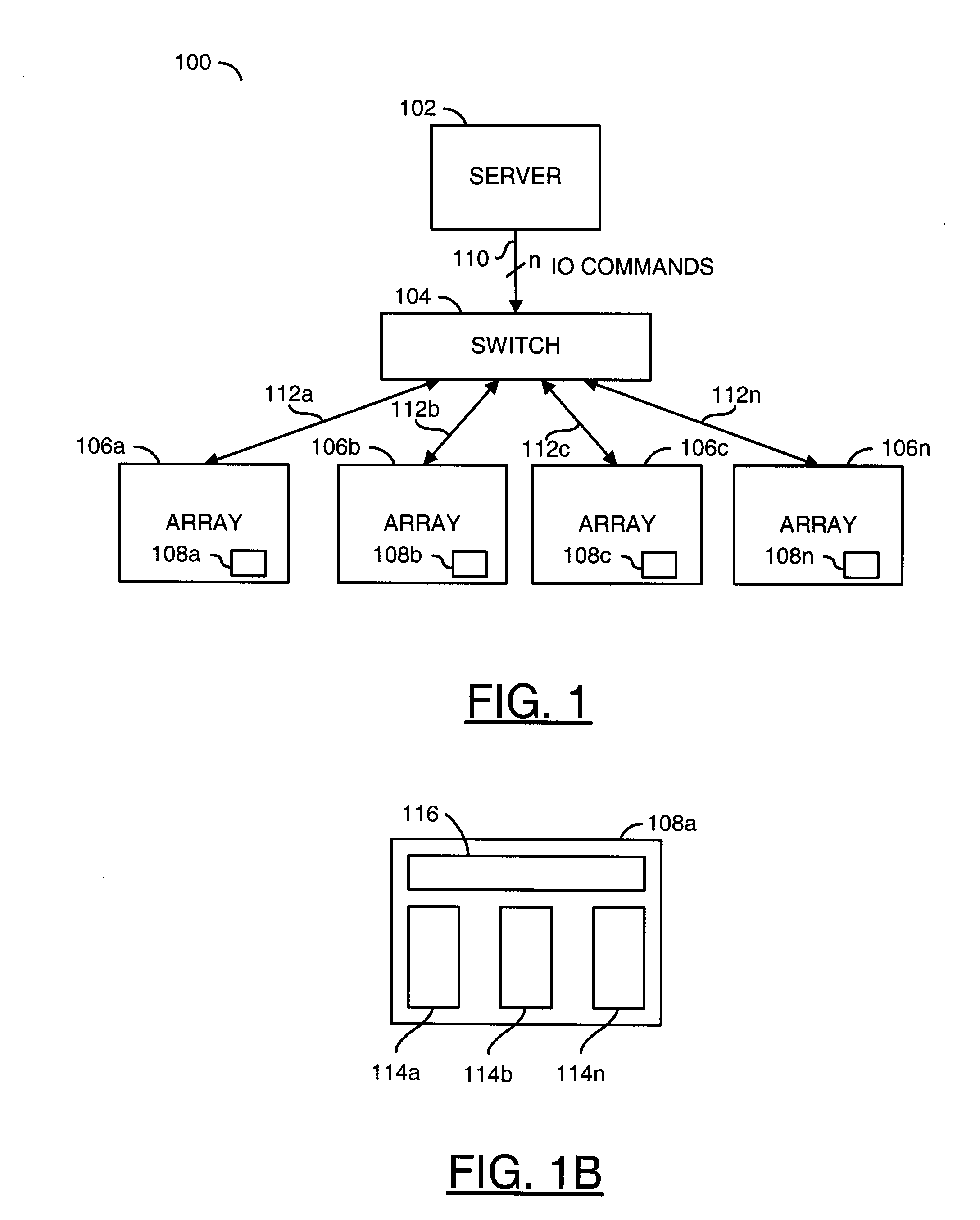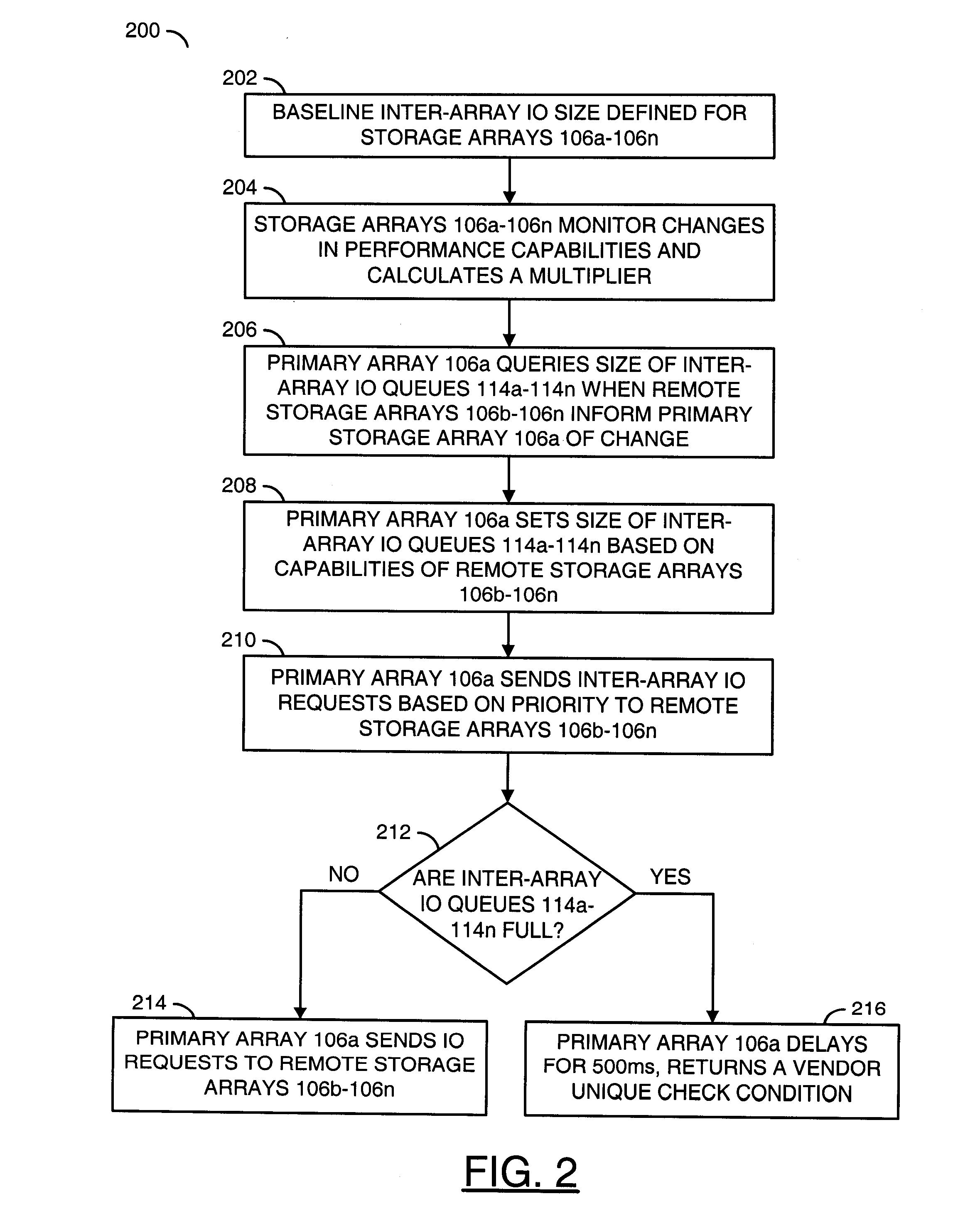System for handling input/output requests between storage arrays with different performance capabilities
a technology of storage arrays and performance capabilities, applied in the field of storage arrays, can solve the problems of stalling of io requests arrays that perform slower, and io requests will stall at the primary storage array, and achieve the effect of short down time and decline in performance capability
- Summary
- Abstract
- Description
- Claims
- Application Information
AI Technical Summary
Benefits of technology
Problems solved by technology
Method used
Image
Examples
Embodiment Construction
[0021]Referring to FIG. 1, a block diagram of the system 100 is shown in accordance with a preferred embodiment of the present invention. The system 100 generally comprises a module 102, a module 104, a set of modules 106a-106n, and a set of modules 108a-108n. The module 102 may be implemented as a server. The module 104 may be implemented as a switch. The modules 106a-106n may be implemented as storage arrays. In one example, the module 106a may be implemented as a primary storage array. The modules 106b-106n may be implemented as one or more remote storage arrays. The modules 108a-108n may be implemented as IO queues. The server 102 may be connected to the switch 104 through a connection 110. The switch 104 may be connected to the arrays 106a-106n through a number of connections 112a-112n. The particular number of arrays 106a-106n may be varied (e.g., increased and / or decreased) to meet the design criteria of a particular implementation. The connection 110 and / or the connections 1...
PUM
 Login to View More
Login to View More Abstract
Description
Claims
Application Information
 Login to View More
Login to View More - R&D
- Intellectual Property
- Life Sciences
- Materials
- Tech Scout
- Unparalleled Data Quality
- Higher Quality Content
- 60% Fewer Hallucinations
Browse by: Latest US Patents, China's latest patents, Technical Efficacy Thesaurus, Application Domain, Technology Topic, Popular Technical Reports.
© 2025 PatSnap. All rights reserved.Legal|Privacy policy|Modern Slavery Act Transparency Statement|Sitemap|About US| Contact US: help@patsnap.com



